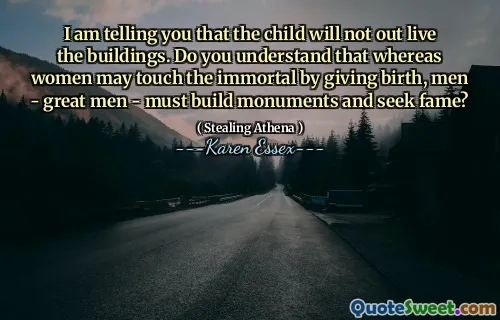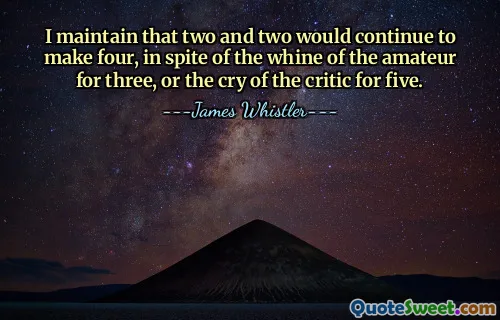
I am telling you that the child will not out live the buildings. Do you understand that whereas women may touch the immortal by giving birth, men - great men - must build monuments and seek fame?
This quote presents a striking reflection on legacy and the differing ways men and women have historically connected to immortality. It suggests that women achieve a form of immortality through childbirth—creating life that continues beyond their own. Men, on the other hand, are portrayed as achieving immortality through their actions, specifically by creating monuments or seeking fame. This eloquent distinction highlights societal perceptions about gender roles and the cultural valuation of legacy.
The phrase "the child will not outlive the buildings" hints at the enduring nature of physical monuments compared to human lifespans, emphasizing that some men desire a tangible, lasting impact on the world. This also illustrates a temporal contrast; while offspring continue a lineage biologically, monuments testify to human creativity and ambition across generations.
Reflecting on this brings a meditation on what it means to live beyond one's lifetime. It forces us to consider not only biological continuation but also the cultural or symbolic impact people hope to leave behind. In a broader sense, the quote challenges us to think about how different actions—be they nurturing new life or creating lasting works—are forms of pursuing immortality. It implicitly questions if these roles are bound by gender or if they are broader human experiences that merely have been historically categorized.
Overall, the quote invites a deep reflection on legacy, the human desire to be remembered, and the diverse means through which people attempt to transcend mortality.






